![]()
![]()
![]()
Use LEFT and RIGHT arrow keys to navigate between flashcards;
Use UP and DOWN arrow keys to flip the card;
H to show hint;
A reads text to speech;
16 Cards in this Set
- Front
- Back
- 3rd side (hint)
|
What is the mechanism of action of insoluble calcium oxalates?
|
all parts of the plant are toxic
have needle shaped oxalate crystals that penetrate the oral mucosa, tongue and throat causes irritation |
|
|
|
What are examples of insoluble calcium oxalate?
|
caladium
dumcane umbrella tree fishtail palm |
|
|

Name this plant
|
Caladium
|
Insoluble calcium oxalate
causes oral mucosa, tongue and throat irritation |
|
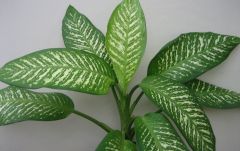
Name this plant
|
Dumcane
|
oral mucosa, tongue and throat irritant
|
|

Name this plant
|
umbrella tree
|
Main toxic Principle: Insoluble oxalates, alkylating agent, saponin, irritant
Clinical Signs: GI irritation,tachycardia, mydriasis and seizures |
|
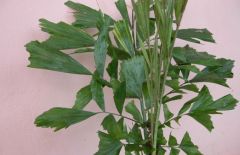
Name this plant
|
fishtail palm
|
Main toxic Principle: Insolulbe calcium oxalates
Clinical Signs: Irritation of lips, mouth, throat, vomiting |
|
|
What are the plants under soluble oxalates?
What is there MOA? |
halogeton
greasewood pigweed lamb quarters |
|
|
|
What are the plants under soluble oxalates?
What is there MOA? |
halogeton
greasewood pigweed lamb quarters causes hypocalcemia and precipitation of insoluble calcium oxalates in soft tissues and kidney damage |
|
|
|
What acid plant have isocupressic acid
MOA? signs? |
ponderosa pine
vasocontriction and decrease iterine blood flow abortion in cattle |
|
|
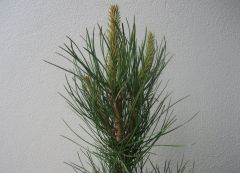
Name this plant
|
Ponderosa pine
|
Main toxic Principle: Isocupressic acid
Clinical Signs: Abortion in cattle |
|
|
What plant has quinones?
MOA? |
St John's Wart
primary photosensitization erythema and pruritis, edema and necrosis of the skin |
|
|
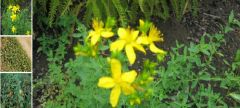
Name this Plant
|
St John's Wort
|
Main toxic Principle: Quinone aicds (Photodynamic substances)
Clinical Signs: Primary photosensitization |
|
|
What plant has tannic acid?
MOA? Signs? |
oak tree
GI lesions, kidney damage constipation, depresion, hemorrhagic diarrhea, hemoglobinuria, hematuria, icterus |
|
|
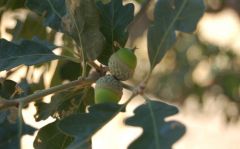
Name this plant
|
Oak tree
|
Main toxic Principle: Tannins which bind to cell proteins causing denaturation and cell death especially in kidney, liver, and GI mucosa, goats and wild ruminants are resistant
Clinical Signs: Anorexia, diarrhea, colic, dehydration, icterus, red-colored urine |
|
|
What plants have triterpene acids?
MOA? |
lantana
yellow sage liver damage and hepatic photosensitization |
|
|
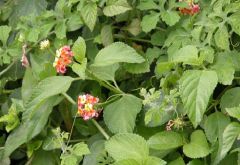
Name this plant
|
Lantana Yellow sage
|
Main toxic Principle: Triterpene acids in unripe berries
Clinical Signs: GI signs, liver damage, hepatogenic photosensitization |

